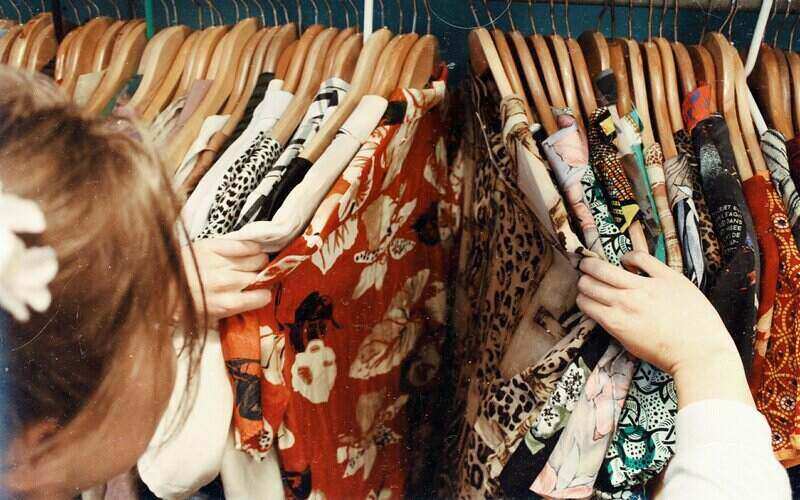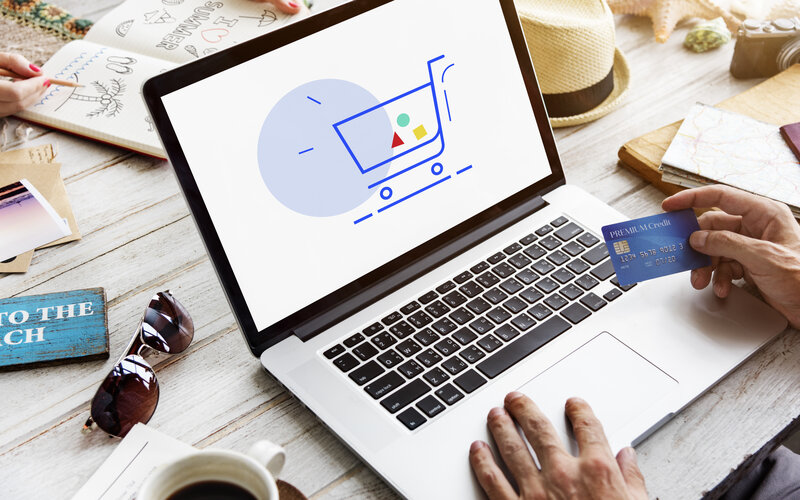'Buy now, pay later' in Australia
Buy now, pay later services like Afterpay and Zip were the subject of 1,064 complaints to the Australian Financial Complaints Authority in the 2021-22 financial year, up 39% from the previous year. The complaints relate to service quality, incorrect fees, unauthorised transactions, and bad impacts on credit ratings, among other issues.
Gerard Brody from the Consumer Action Law Centre has called the complaint levels "the tip of the iceberg".
"Many people won't even know where to go when they've got a complaint with a buy now, pay later provider. Even if people go to the Australian Financial Complaints Authority because, for example, they've been overextended, there may not be much that the complaints body can do, because the laws don't apply to buy now, pay later providers"
In late 2022, the government sought feedback on how they could tighten a 'regulatory gap' that meant very little legislation applies to BNPL providers. As of December, they received 78 submissions from bodies as varied as Equifax, the Government of Western Australia, Commonwealth Bank and Afterpay themselves. In the coming months, it's likely there will be a government decision on 'appropriate regulation' for the sector.
What is Afterpay?
For the uninitiated, Afterpay is one of several buy now, pay later (BNPL) platforms targeted towards millennials because it taps into their spending habits and instant gratification mentality. According to a 2020 ASIC review of BNPL services, 59% of users were 34 or under, a group that makes up only 31% of the Australian population. This younger age profile means BNPL users tend to have lower incomes than credit card holders. ASIC's consumer research found 44% of BNPL users had an annual income of less than $40,000, compared to just 14% of credit card holders
Think of it as lay-by in reverse. For its 2 million+ users, Afterpay allows them to purchase whatever they like now, and worry about paying for it later. Future problem for future you, right?
Even though it's possible to use buy now, pay later platforms responsibly, most people don't; and this is where the problem lies.
The ASIC review found the majority of buy now, pay later users admitted to spending more than they otherwise would. One in six users said they had experienced at least one negative impact as a result of using buy now, pay later services, such as delaying bill payments, becoming overdrawn, or having to borrow money from family or other loan providers.
So, should you use Afterpay, or steer clear of buy now, pay later services altogether? We've weighed up the pros and cons of Afterpay to help you decide.
Benefits of using Afterpay
Afterpay wouldn't have become this popular if it wasn't enticing. Here are some of the main benefits of using Afterpay.
1. Seamless integration within store
Afterpay is fully integrated within an online stores checkout, which makes impulse spending all the more easy. You just opt to pay with Afterpay at the checkout instead of your standard Mastercard or Visa. That's it – they'll sort out the payment plan and email it to you. Once you've created an account, purchasing through Afterpay is almost automatic, so you'll never have to roll out of bed to get your debit or credit card again. It's almost too easy.
You don't have to shop exclusively online to take advantage of Afterpay. Afterpay is available in-store at most retailers across Australia. The way it works is that you simply select the barcode icon at the bottom of the Afterpay app home page, take your item up to the counter where it will be scanned, and the payment is then processed like any other Afterpay purchase. The only difference is that you will be automatically charged 25% of the purchase price of the item at the register – whereas if you've been a responsible Afterpay user for a while, you won't be charged the first instalment for two weeks if you're shopping online.
2. Fast, easy approval process
Setting up your Afterpay account is so simple, it can quite literally be done in minutes. The only steps you have to follow are pretty much what you'd expect to find when signing up to any other website:
- Create a username and password
- Provide your phone number
- Enter the verification code sent to your phone number
- Enter your name and date of birth
- Enter your bank account information
Overall, there's little to no effort involved in signing up, which is, of course, one of the major selling points of the platform – they're designed for you to be able to sign-up at the counter as you're about to pay.
3. Interest-free terms
By using Afterpay, you don't have to pay interest on your fortnightly instalments. Afterpay prides itself on being free for users, with the only costs being the price of your purchase and the $10 late fees, which pale in comparison to interest rates as high as 20% for credit cards (which can stack up your interest costs very fast, we might add!).
4. Staggered payment plan
It can be hard to have the discipline to create and stick to your own payment plan, so Afterpay does it for you by splitting the total amount of your bill into four equal fortnightly instalments. These are then automatically charged to the debit or credit card you've nominated when they're due – all you need to do is make sure you'e got enough money in your account otherwise you'll be charged with a $10 late fee.
5. Can be a good alternative to a credit card
According to an Afterpay study, millennials are 37% less likely to use a credit card than older generations, because they view them as too risky and costly. The same research also found that millennials are increasingly turning to buy now, pay later products to manage their finances.
ASIC's report found many users used Afterpay to have access to higher value or time senstive purchases, a common motivation also for credit card users. If you're someone who frequently uses a credit card to make purchases you otherwise wouldn't be able to afford, switching to Afterpay may be a better option because you'll avoid paying hefty amounts of interest. Tha's not to say we're giving you permission to start recklessly Afterpaying all your purchases just because you'l avoid racking up interest. It's still a good idea to stick to a budget and make sure you can actually afford to make those repayments.
Disadvantages of using Afterpay
There are two sides to every story. While Afterpay can be good if it's used responsibly and you can comfortably make the repayments, something tells us most people using the service aren't.
1. Encourages impulse spending
The biggest red cross against Afterpay is that it can encourage bad spending habits. Platforms like Afterpay are a game-changer for impulse shoppers because you can quite literally take your purchase home and it's yours before you've even put a dollar towards it.
The question you need to ask yourself is: will you still be happy paying off that dress in four weeks time when it's old news at the back of your wardrobe? Probably not.
2. Late payment fees
Late fees are a significant source of Afterpays revenue.
If you don't have enough money on your card to cover the automatic payment and your card declines, you have 24 hours to log into your account and pay the amount due, otherwise, Afterpay will charge you a $10 late fee. Another $7 is charged if you fail to meet the repayment within seven days from the due date. For orders below $40, a maximum of one $10 late fee can be applied, but for orders above this amount, the late fee is capped at the lower of either $68 or 25% of the order value.
3. You can't pick when you pay
Afterpay doesn't allow you to pick the day your payments come out – unlike credit card or personal loan payments. Some people might like the fact Afterpay picks your payment plan for you, while others prefer to have the money deducted on a day they know they actually have money there to deduct: payday!
Not being able to pick when you pay leaves your account at risk of overdraft and potentially copping a late fee from the bank, or your Afterpay payment failing to go through and you copping the late fee/s from them until it does. Either way, you could be opening yourself up to copping more fees than you need or want to.
4. Can affect your ability to apply for loans
Since the Royal Commission, lending requirements have really tightened, with stories being told of applicants being denied for home loans because they spent too much money on UberEats or had an outstanding Afterpay balance.
Even though Afterpay doesn't require a credit check nor does it affect your credit score, lenders still regard buy now, pay later services as a line of credit because you're borrowing money you don't have. Lenders will take your Afterpay purchases into consideration alongside your other debts, expenses, and overall risk profile when deciding if they should give you a home loan or not.
5. You're spending money you don't have
Believe it or not, there was a day before Afterpay and credit cards. Yep, our grandparents had to pay for things with (gasp) money they had.
The point is, it;s possible to survive without using credit to make unnecessary purchases. There are some things credit should be used for – a Kmart shopping spree because you want to redecorate your apartment is sadly not one of them.
6. Minimal credit checks
Most of us are pretty bad with credit. The average Australian has around $2,000 in credit card debt, according to data from the Reserve Bank. If you're already an irresponsible spender, you could find yourself in even more trouble with buy now, pay later platforms like Afterpay as they usually don't require a credit check.
7. Spending limits can apply
You could say this is a help and a hindrance. Spend-happy customers who struggle to make repayments are limited to what they can borrow next time. Afterpay has an automatic system built in that decides how much you're approved to spend, which is based on things like how long you've been a member of Afterpay and how diligent you've been in making repayments in the past. If you're bad at budgeting, this is probably a good thing.
On the flip side, if you've been a responsible user and haven't ever had an issue making repayments, you're likely to be approved for whatever amount you're asking for (within reason).
The future of BNPL
In recent times, the tide has began to turn on BNPL providers. In February 2023, Openpay - one of Australia's oldest BNPL providers - collapsed. Other BNPL companies are in trouble too, with Klarna laying off 80 staff members in early 2023, and the share price of Zip falling 78% over 2022. Rising interest rates have made it more difficult for these services to receive funding, while a drop in household disposable income means people are spending less on things they don't need - the bread and butter of BNPL. This is while the Government is putting together new regulation that will further constrict the operations of these businesses.
Payments expert Grant Halverson believes that while the concept of BNPL is here to stay, these companies are not long for this world.
"The BNPL sector has lately been under pressure due to rising funding costs and lower consumer spending during soaring inflation." he told Savings.com.au.
"This is before regulation and new competitors like Apple take a toll. PayPal is already claiming to be the biggest BNPL app after just two years."
Savings.com.au's two cents
Regardless of whether Fintech companies like Afterpay survive, the cat is out of the bag when it comes to BNPL services. It's likely that more and more retailers will offer their own version moving forward, so the temptation will remain. Like any financial product, deciding whether or not to use BNPL is a personal choice based on your financial situation and spending habits. If you use buy now, pay later for spending you would do anyway, it can be a good way to manage your finances by spreading out the payment over a few weeks. ASIC's report found that 86% of BNPL users believed they would use such arrangements again, so it's clearly not always a black hole sucking up all your extra cash.
But if you're already a problem spender and lack discipline when it comes to making repayments, Afterpaying could mean Afterpain.



 Brooke Cooper
Brooke Cooper

 Hanan Dervisevic
Hanan Dervisevic